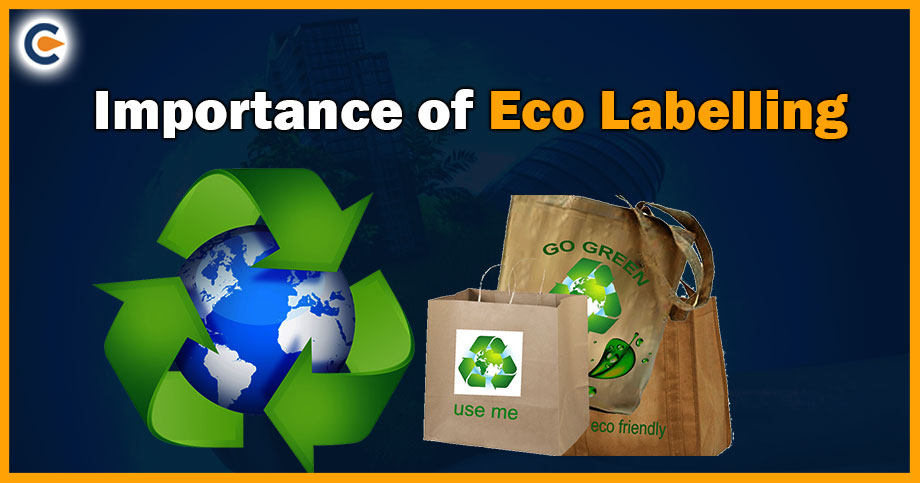Eco-labels are markings placed on product packaging or in e-catalogues that enable consumers and institutional purchasers to quickly and readily identify items that exceed environmental performance requirements and are consequently rated “environmentally preferred”. Government agencies, non-profit environmental advocacy organisations, and business sector companies can all hold or control eco-labels. Eco-labels can be single-attribute, which means they focus on a specific stage of a product’s lifetime (i.e., the usage phase) or a particular environmental concern (i.e., VOC emissions). They can also be multi-attribute, which means they handle several distinct environmental challenges during a product’s lifespan (manufacturing, usage, maintenance, disposal) (i.e., energy use, chemical use, recycling, and more). An eco-label specifies a product’s (i.e., good or service) overall environmental preference within a product category based on life cycle factors.
In contrast to a self-proclaimed environmental emblem or claim statement made by a manufacturer or service provider, an eco-label is granted to items that fulfil defined environmental leadership standards by an unbiased third party. Eco Labelling relates to the supply of information to customers regarding a product’s relative environmental quality. Across the world, many environmental performance labels and declarations are being used or considered.
Objective of Eco Labelling
Eco Labelling has become a valuable tool for governments in supporting ecologically sound activities and businesses in discovering and building markets (domestic and occasionally worldwide) for environmentally preferred products. Several nations already have some Eco Labelling, and others are contemplating such programmes. Dedication to specific goals has been essential to the global success of the projects. While programme administrators may articulate them differently, three fundamental objectives have been identified and are being pursued:
1. Protecting the Environment
Environmental conservation and protection are top priorities. Governments and non-governmental programme authorities employ specific programmes to influence consumer decisions and stimulate the development and consumption of ecologically preferred goods and the provision and use of environmentally preferable services. In this way, it functions as a market-based tool to promote environmental improvement. Environmental goals might include:
- Promoting the efficient use of non-renewable resources, including fossil fuels;
- Enabling the reduction, reuse, and recycling of industrial, commercial, and consumer waste;
- Encouraging the protection of biological and ecological diversity; and
- Inspiring the proper management of chemicals in products.
2. Promoting Environmentally Responsible Innovation and Leadership
Eco Labelling initiatives provide a commercial incentive to ecologically innovative and progressive firms by granting and promoting an eco-label. Businesses that offer items that decrease environmental stress can build or strengthen a market niche and a favourable corporate image among consumers, giving them an edge. The standards are often designed to reward only the best environmental performers in a product category. Most programmes boost criteria gradually and progressively to encourage manufacturers and service providers to keep up with new and emerging performance improvement opportunities and market developments.
3. Raising Environmental Awareness among Consumers
Eco Labelling schemes can help raise consumer knowledge of environmental concerns and the consequences of their decisions. In countries where consumer knowledge is strong, a trustworthy eco-label that offers credible information on the environmental implications of items on the market may be all needed to promote eco-labelled products. It can be used to promote ecologically sound behaviours in nations where customers are not as driven by environmental concerns.
Criteria for Eco-Labelling
The Ministry has favoured a fundamental approach in which the criteria for giving any label should not ignore product quality and should focus mainly on the direct impact of a product during use and disposal, as well as characteristics of energy efficiency, noise, and other environmental factors. The following primary environmental criteria for products are prescribed:
- That they cause significantly less pollution than other comparable products in production, usage, and disposal;
- That they are recycled and recyclable where comparable products are not;
- That they contribute significantly to saving non-renewable resources or minimising the use of renewable resources when compared to other comparable products; and
- That they contribute to a reduction of adverse environmental effects.
Guiding Principles for Eco Labelling
Based on the experiences of successful Eco Labelling projects and relevant ISO work, a set of principles that are crucial to an effective and credible programme may be identified:
1. Voluntary Participation
Manufacturers, importers, service providers, and other enterprises must voluntarily engage in an Eco Labelling scheme. Programs should also be planned and run so that potential industry participants (and other interested parties) can request that Eco Labelling categories and criteria be created for their products.
2. Adherence to Environmental and Other Applicable Regulations
The kind and scope of programme participation criteria, both product-specific and more general conditions, are essential contributors to an Ecolabelling program’s legitimacy. While the criteria primarily focus on the environmental elements and performance of the product being supplied, it is equally critical to address the regulatory compliance of the producer’s/facility providers from which the product is offered. It is widely acknowledged that complete compliance with appropriate environmental and other regulatory standards is a fundamental component of industrial and environmental leadership.
3. Assessment of Overall Performance Level
Apart from statutory compliance, the quality and performance of a product to be evaluated for Eco Labelling must also be addressed. If items having the eco-label exhibit different quality and good performance in comparison to alternatives, the reputation of both the eco-label and the Ecolabelling programme may be better. Environmental qualities are simply one consideration evaluated by customers in their purchase decisions, according to market and consumer surveys and research, and are typically only factored in once similar quality and performance have been proven.
4. Backing Of Scientific and Technical Concepts
Maintaining high technical criteria based on sound ecological knowledge ensures customers can trust eco-label and licence applicants to treat them fairly. Furthermore, it is widely accepted that environmental product requirements should be based on indications derived from life cycle considerations. The argument is that there is a widely acknowledged [increasing] need to ensure that all elements of a product’s creation, provision, usage, and end-of-life possibilities have been considered.
5. Criteria to Distinguish Leadership
Criteria should be devised and implemented to separate a product category’s leadership section from the remainder of the category. While determining the proper “cut-off point” might be difficult, preventing and effectively handling the difficulties of arbitrariness and inappropriate leadership criteria is necessary.
6. Criteria Must Be Credible, Relevant, Realistic, Quantifiable, and Verifiable
Maintaining high technical criteria based on sound ecological knowledge ensures customers can trust eco-label and licence applicants to treat them fairly. Most programmes, for example, are moving towards full life cycle assessment to guarantee consumers and producers that all parts of a product’s life cycle have been considered. But the requirements must also be achievable (at least for a leadership market sector) and represented in quantifiable units that can be confirmed. In other words, criteria must be acceptable, reasonable, and beneficial to potential programme licensees, entities entrusted with ensuring criteria compliance, consumers/procurers, and other interested parties.
7. Independence
A reputable Eco Labelling programme should be run by an organisation not influenced by commercial or other interests. The programme’s independence also applies to determining product categories and environmental award criteria. The formal and direct participation of various stakeholders and interested groups on independent boards, panels, or advisory bodies often accomplishes this. Members of the boards/panels/groups are often drawn from the industries, environment, consumer, academic and scientific, and government sectors. The issue is to try for a balanced representation so that particular sector or individual stakeholder interests do not have an actual or perceived undue impact.
8. Open and Accountable Process
A credible program must be based on an open and accountable process that can be observed, monitored, and questioned at any time. Fair, consistent, and uniformly applied procedures must be established at each process step. A sound quality management system is a strong asset and highly desirable. Also, public criteria review is an essential feature of an open process. Some programs publicly announce new draft criteria through media and government information networks. Others hold public hearings or directly contact stakeholders/interested groups requesting comments. The comments received through these various means are then taken into account in preparing the final criteria.
9. Flexibility
To be credible and effective, programmes must function in a business-like and cost-efficient way compatible with market dynamics and needs. They must be able to adapt quickly to technology and market developments. This necessitates, for example, a periodic evaluation and, if required, modification of both environmental award criteria and categories, considering technical and market advancements. Periodic review (typically every three years) ensures that standards and criterion levels stay up with new advancements. Several schemes allow standards to be modified at any time while giving licensees a certain amount of time to fulfil the amended criteria.
10. Adherence to the ISO guiding principles
Since the ISO 14000[1] set of standards is increasingly accepted and used by businesses and governments worldwide, it may be helpful for Eco Labelling projects to demonstrate compatibility with the guiding principles included in the applicable ISO environmental labelling standards. Such uniformity might increase the perceived validity and soundness of existing and developing such initiatives.
Conclusion
Effective advertising for raising awareness, adding possible product standards, and favourable lobbying of industry groups may raise the visibility of this eco-label and position it as an acknowledgement of Indian efforts towards green products and dedication to environmental preservation on a global scale. To accomplish sustainability, it must make commercial sense to create cleaner manufacturing. The sustainable firm must convert and produce materials that people value for contributing to the quality of life and environmental protection.
Also Read:
Environmental Audit Checklist
A Complete Guide For Environmental Audit
Types Of Environmental Impact Assessment











